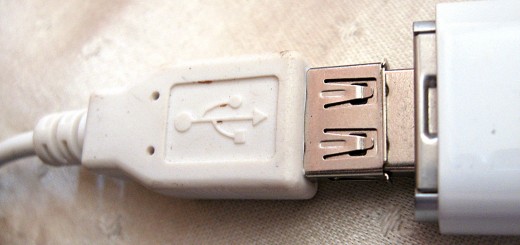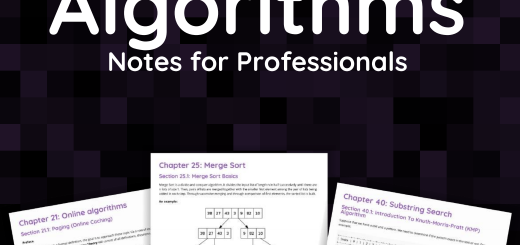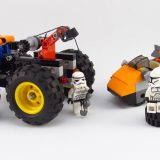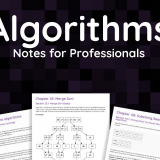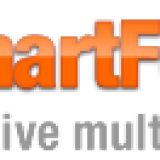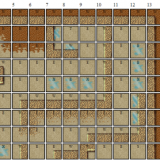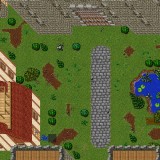Lesson 1: Pits of Doom — the planning stage
Before you start any kind of online game you need to take a minute to sit down and consider some of the following questions:
- What is my game called?
- What is my target audience?
- Can I afford the cost and time of manging my own game?
- Am I good at working with people?
- What competition already exists for the game I’m going to make?
- How will my game work?
It’s All In A Name
A name can make or break a game. Pits of Doom isn’t anything exciting, but this is a tutorial game, not something I’ve made to produce to lots of people. Your name should be memorable, but not too hard to spell, say, or remember. Shorter names seem to work better as well, but that’s more of a personal preference.
Hit the Target
Many people overlook target audiences. When you design your game you need to keep in mind who actually plays your game. If your game is for young children then you don’t want a game that’s overly complex, hard to navigate through and has few images. Also take into account your audience’s familiarity with computers and the Internet. A child isn’t as likely to be able to understand complex directions or sequences whereas a hard core video game addict should have no problem navigating menus and following technical directions.
Carrying the Costs
Games are inherently expensive. The bigger and more popular your game becomes the more it’ll cost you to keep it up and running. Are you willing to put up the expensive of domain names, servers, bandwidth, hardware upgrades, technical support, and so forth and so on? My biggest game has over 100k members and costs me over $300 a month. Will you be able to carry the costs of the game’s expenses if your game isn’t generating enough revenue to support itself? These are all really important questions. Take the time to research how much it costs to buy a domain, get hosting setup, and any other additional fees you may run into before you start.
I’m a People Person
Even if you aren’t planning on it, your game will generate a lot of interaction among people. People will email about problems or questions or help constantly. If you’re not great with people or you can’t be bothered then you’re in for an eye opener. A website without any kind of support doesn’t do well in the big scheme of things. Take the time to evaluate yourself. Are the benefits worth the downfalls?
Overtake the Competition
Is your game 100% unique? Changes are that it’s not. Take a day or two to find any other site you can that’s even a little bit similar to the game you have in mind. Join them and check them out. What are features you like? What do you dislike? The more time you spend going through your competition’s setup the more you’ll generate a feel for what you want your own game to be like, what features are a given, or could be improved upon. Knowledge is power, and giving your target audience a more useful, more enjoyable game is sure to win their approval and guarantee your popularity.
Gears & Cogs
Now it’s time to set your brain into motion. Write down the biggest features you want to include in your game. Then go ahead and break it down into smaller pieces. This will help you express all of your ideas before you start making anything and should increase the usability of anything you end up making.
Putting It All Together — Pits of Doom
Here is something I’ve thrown together to give you an idea of the thought process I went through when coming up with the Pits of Doom game.
I chose a really generic name for this game simply because it’s a tutorial on making your own online game. Here are some names I might consider if this was a game I was making as a serious revenue earner:
Black Abyss
Infinity Nights
Dark Haven
The target audience for this game is boys between the ages of 12-18. That means they’re all in middle school or higher. They probably are used to seeing shoot em up/slasher video games by this age. Most of them have a fairly high computer usage skills at this point, but some of them are young enough to struggle. That means my navigation and layout should be simple to a point, but maybe the game play can be much more complicated.
Some similar online fighting games are:
games.swirve.com/utopia/ – an online strategy game. I find this one to be way to complicated for younger players. It has some great ideas, but it’s a bit overwhelming when you go in to play for the first time.
www.elveron.com – what do you think about this one? Follow the link and ask yourself, what do I like, what don’t I like? What could be done better?
Now thing about what similarities you saw. What differences? Things that are similar in all games are probably features you’d want to strongly consider having yourself, or to some variation. Those are things that have made these games popular.
This game isn’t ever going to go up on any of my servers, so it won’t cost me anything to maintain. Can’t afford the cost of having a game online but still interested in learning how to make one? No problem, all you have to do is download and install XAMPP. Now you can run the game right on your own computer at home. Once it’s installed you can setup a database and get busy. Need more help getting XAMPP up and going? Try this tutorial.
Finally, I took the time to define the features I’ll be adding to the game and broke them down:
Game World –
Each map in the game is called a map node.
There can be an unlimited number of map nodes in the world.
Map Nodes –
Each map node has a name, a description.
Each map node can have unlimited coordinates.
Coordinates –
X, Y, Z value.
Has 1 object associated with it.
Wall value:
- 0 = open, they can move to that coordinate
- 1 = there is a wall here
Has 1 transfer node associated with it, detailing that moving to this coordinate will force the user to move to that coordinate on the new map node.
Has a level associated with it, detailing that moving to this coordinate will force the user to move up or down one level.
Item Objects –
G = gold (random amount each time)
T = treasure
S = sword
A = armor
L = lantern
O = oil
H = shield
C = enemy creature/monster
X = pit, chance of them dying, or draining all magic, or dropping to a lower level
T = health tonic
M = magic potion
S = store where they can buy items
L = ladder, you can climb up or down to another level
Characters –
These are owned by members.
They have a name, gender, and breed (monster, human, elf, dwarf, centaur, fairy).
When the members is online, they are always associated with an active coordinate.
They can equip items and use them to help their statistics.
The more they play the higher the character’s statistics go.
Statistics Include:
Health
Speed
Inteligence
Strength
Agility
Fighting Level
Magic Level
Magic Amount – how much magic they have they can currently used
Weapon Equipped
Spell Equipped
Armor Equipped
Shield Equipped
Characters can fight other characters and monsters in the game.
If a character kills another character then they get to keep all of the items the character they killed had equipped and any gold they’d collected in the past 20 minutes.
Characters can trade items with each other if they’re both on the same coordinate.
Members –
Has a username, login, and password.
Keeps an email to send them password information.
Keeps track of when they are online or offline so it can activate their character.
Starts off 500G
It costs 100G to create a character.
Members can trade in gold for better weapons, however they must get the character to a store first.
When a member is online all of their characters are active in the game.
Members can trade any item they have among their own characters even if they aren’t on the same coordinate.
As soon as a member logs off or closes the game window all of their characters go inactive unless they are currently being fought by another character or attacked by a monster.
Mail –
Members can send messages to other members in the game.
Messageboard –
Members can post on a community message board.
Best of the Best –
Top members and characters in the game.
Oldest characters in the game.
Strongest characters in the game.
Game Objective –
The objective of this game is to navigate around the game world and gain prestige for your characters by keeping them alive as long as possible.
The more characters you have the easier it is to explore the world but the harder it is to keep all of them alive.
Pits are one of the biggest hazards in the game, they continuously drop you to lower and lower levels. The lower you are on any map the harder the monsters are to defeat.
Pits –
If you run into one of these you will have one of these random possibilities:
Die
Loose all your money
Loose your best item
Loose all your magic strength
Loose all your value in 1 statistics area
Have one value in your statistics areas cut in half
Be teleported to a random location on any map
Drop down to a lower level (if there is one).
Monsters –
These are automatically generated by the game. The further down you are on any map the harder they are to defeat but the bigger the reward for killing one.
Player Movement –
You won’t be able to tell if you’ve hit a wall, a pit, or an empty space until at least one of your players has explored the map already. That means you have to visit the entire map before you can see what the map looks like from a top down view. This makes it more exciting as you won’t know what you’ll find until you go there.
Phew! That’s a lot but this is actually a fairly straight forward and small game. I’m sure you can already think of a hundred different things you would or could add to it from what I’ve described already.
Now, you’re ready to start learning how to make this game. Go to lesson 2.

